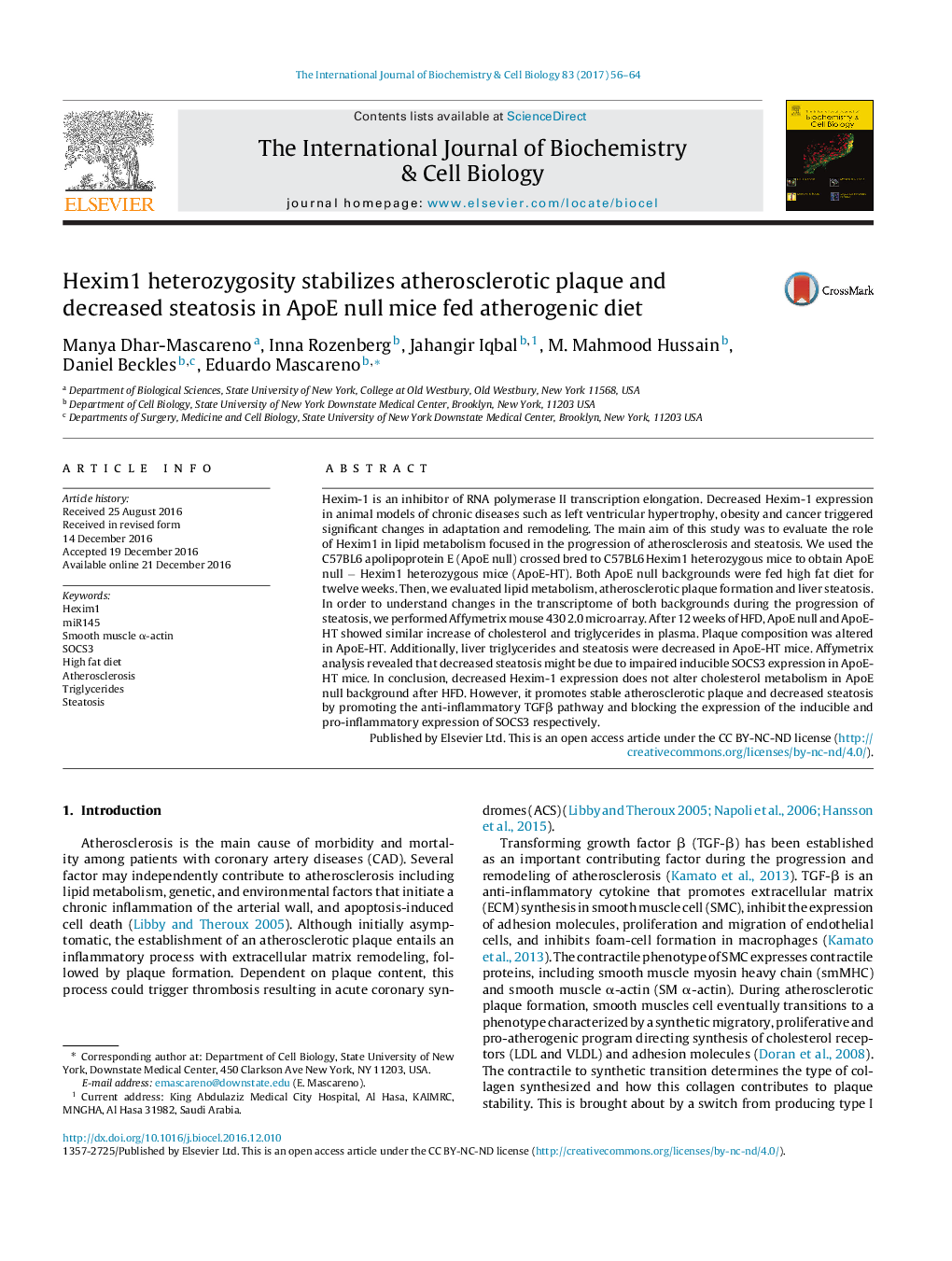| کد مقاله | کد نشریه | سال انتشار | مقاله انگلیسی | نسخه تمام متن |
|---|---|---|---|---|
| 5511414 | 1539859 | 2017 | 9 صفحه PDF | دانلود رایگان |

Hexim-1 is an inhibitor of RNA polymerase II transcription elongation. Decreased Hexim-1 expression in animal models of chronic diseases such as left ventricular hypertrophy, obesity and cancer triggered significant changes in adaptation and remodeling. The main aim of this study was to evaluate the role of Hexim1 in lipid metabolism focused in the progression of atherosclerosis and steatosis. We used the C57BL6 apolipoprotein E (ApoE null) crossed bred to C57BL6 Hexim1 heterozygous mice to obtain ApoE null â Hexim1 heterozygous mice (ApoE-HT). Both ApoE null backgrounds were fed high fat diet for twelve weeks. Then, we evaluated lipid metabolism, atherosclerotic plaque formation and liver steatosis. In order to understand changes in the transcriptome of both backgrounds during the progression of steatosis, we performed Affymetrix mouse 430 2.0 microarray. After 12 weeks of HFD, ApoE null and ApoE-HT showed similar increase of cholesterol and triglycerides in plasma. Plaque composition was altered in ApoE-HT. Additionally, liver triglycerides and steatosis were decreased in ApoE-HT mice. Affymetrix analysis revealed that decreased steatosis might be due to impaired inducible SOCS3 expression in ApoE-HT mice. In conclusion, decreased Hexim-1 expression does not alter cholesterol metabolism in ApoE null background after HFD. However, it promotes stable atherosclerotic plaque and decreased steatosis by promoting the anti-inflammatory TGFβ pathway and blocking the expression of the inducible and pro-inflammatory expression of SOCS3 respectively.
Decreased Hexim1expression modifies the pro-atherosclerotic response in ApoE knock out due to high fat diet.ApoE mice carrying both Hexim1 alleles and fed HFD will develop atherosclerosis characterized by a rich lipid core, less stable fibrous cap and the presence of hemorrage foci. At the molecular levels, the smooth muscle transition from a contractile to a synthetic phenotype will include decreased expression of the miR 143/145 cluster. Additionally, non-alcoholic fatty liver disease will develop characterized by steatosis and increase SOCS3 expression. However, ApoE mice heterozygous for Hexim1 and fed HFD showed atherosclerotic plaque with increased collagen content, less lipid core and increase expression of α-smooth muscle actin due to an increased expression of miR143/145 cluster. Decreased liver steatosis was also observed with an impaired SOCS3 expression.111
Journal: The International Journal of Biochemistry & Cell Biology - Volume 83, February 2017, Pages 56-64